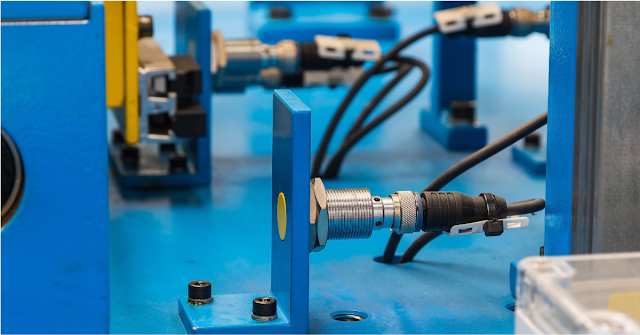Industrial sensors are the hidden heroes of modern automation systems, providing real-time data for accurate control, monitoring, and decision-making. Whether you're working with PLCs, SCADA systems, or IoT platforms, understanding sensors is essential.
1. Proximity Sensors
Purpose: Detect the presence or absence of objects without physical contact.
Types:
- Inductive: Detects metal objects using electromagnetic fields.
- Capacitive: Detects both metal and non-metal objects, like plastic or liquid.
- Magnetic: Uses a magnetic field to detect objects with magnets.
Applications:
- Object detection on conveyors.
- Position sensing in assembly lines.
- Bottle counting in packaging.
2. Photoelectric Sensors
Purpose: Detect objects using light beams.
Types:
- Through-Beam: Transmitter and receiver are separate.
- Retro-reflective: Uses a reflector.
- Diffuse: Both transmitter and receiver are in one unit.
Applications:
- Object detection on conveyors.
- Counting products.
- Safety light curtains.
3. Temperature Sensors
Purpose: Measure the temperature of machines, liquids, or environments.
Types:
- RTD (Resistance Temperature Detector): High accuracy, ideal for precision applications.
- Thermocouple: Fast response, suitable for high temperatures.
- Infrared Sensors: Non-contact measurement for moving objects.
Applications:
- Monitoring motor temperature.
- Controlling Burner Temperature.
- Ensuring safe operating conditions.
4. Pressure Sensors
Purpose: Measure the force exerted by gases or liquids.
Types:
- Gauge Pressure: Measures relative to atmospheric pressure.
- Absolute Pressure: Measures relative to a vacuum.
- Differential Pressure: Compares pressure between two points.
Applications:
- Monitoring pipelines and tanks.
- Controlling air compressors.
- Ensuring safe hydraulic operations.
5. Level Sensors
Purpose: Measure the level of liquids or solids in tanks.
Types:
- Ultrasonic: Non-contact measurement using sound waves.
- Capacitive: Detects material presence via electrical fields.
- Float Switches: Mechanical sensors for liquid level detection.
Applications:
- Monitoring water tanks.
- Controlling hopper levels.
- Preventing overflow in chemical tanks.
Conclusion
Industrial sensors are essential for automation, safety, and efficiency. Understanding how they work and how to troubleshoot them can save you time, money, and downtime.
👉 Which sensor do you use most in your projects? Share your experiences and troubleshooting tips in the comments.



.png)
.png)
.png)
.png)




0 Comments